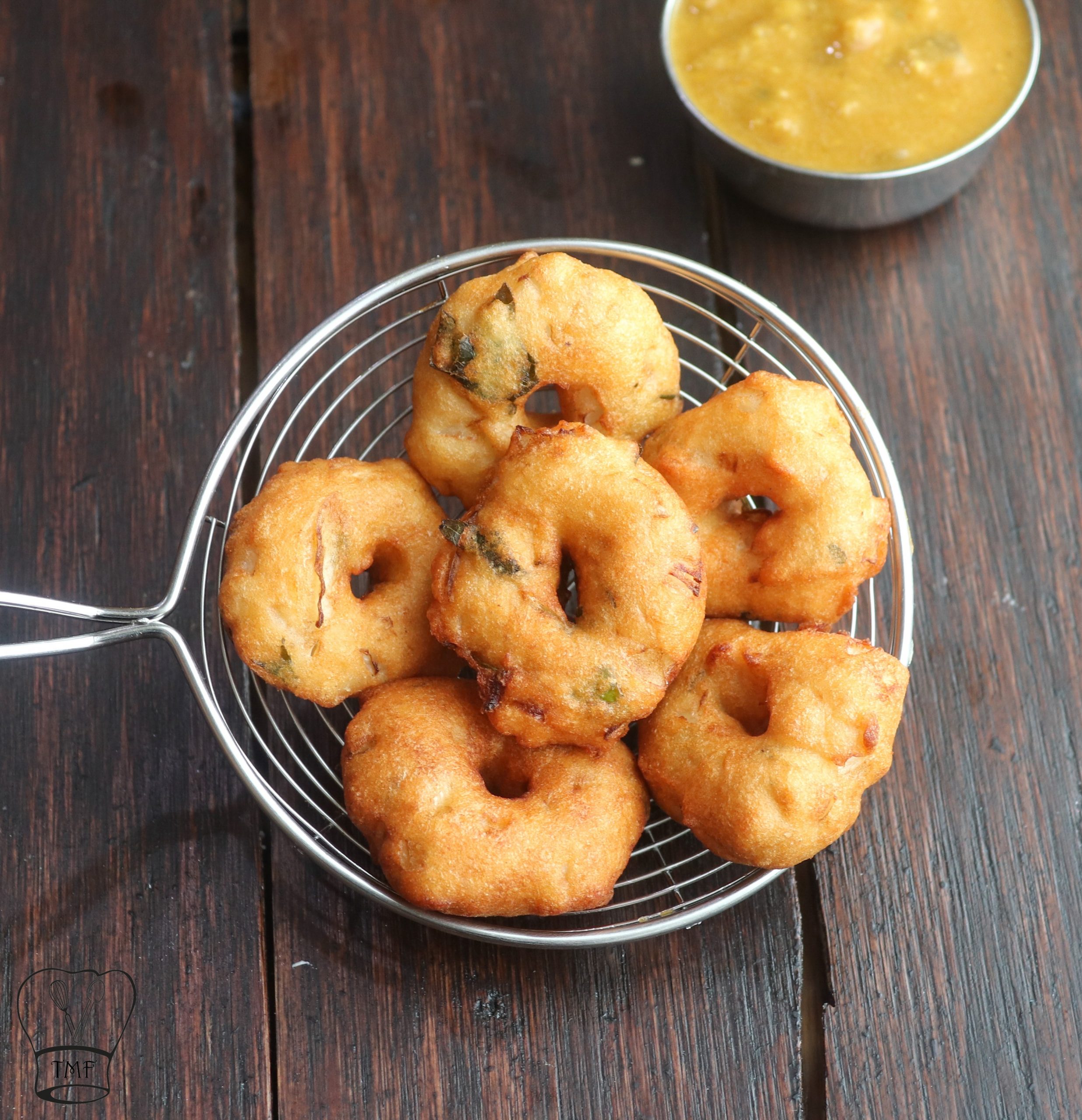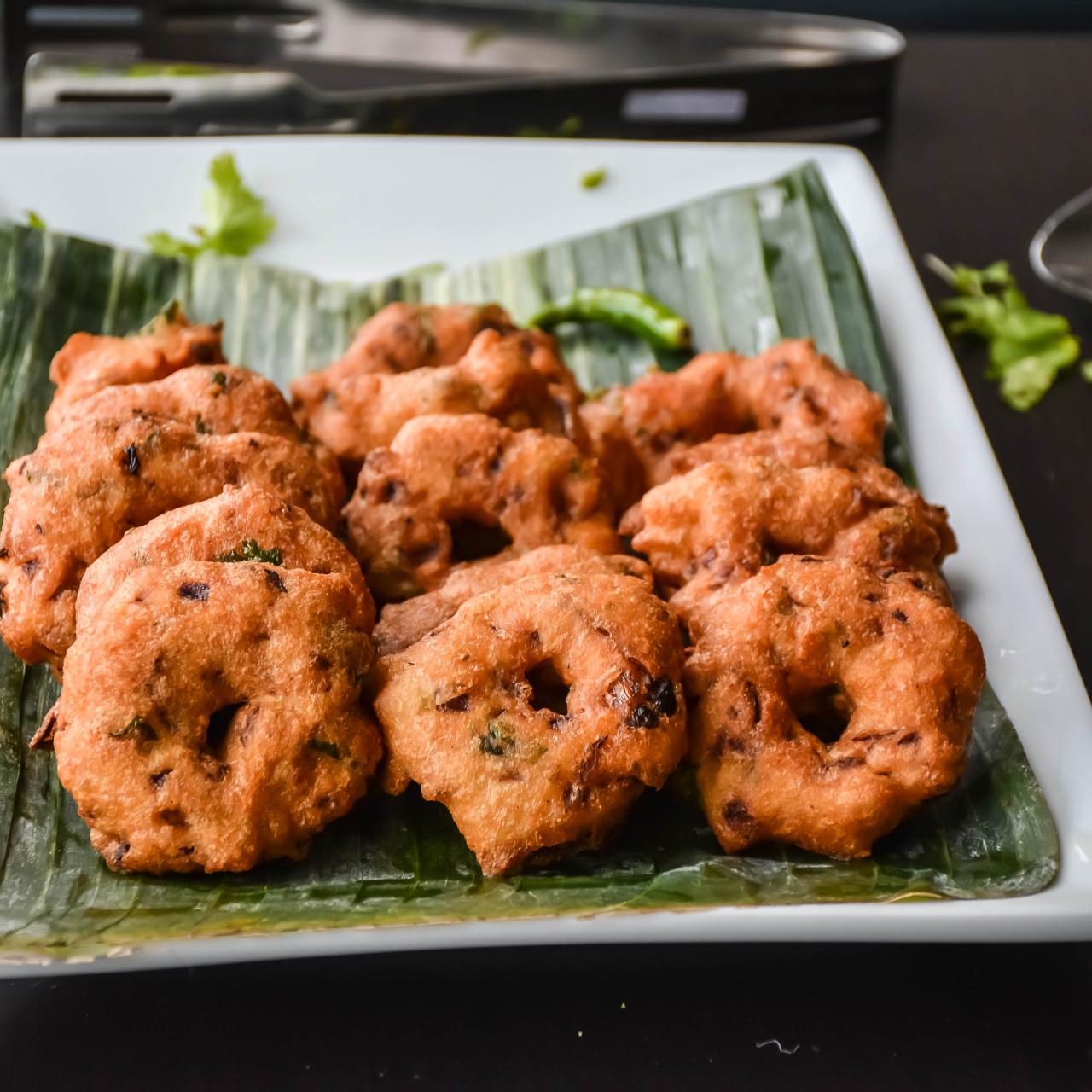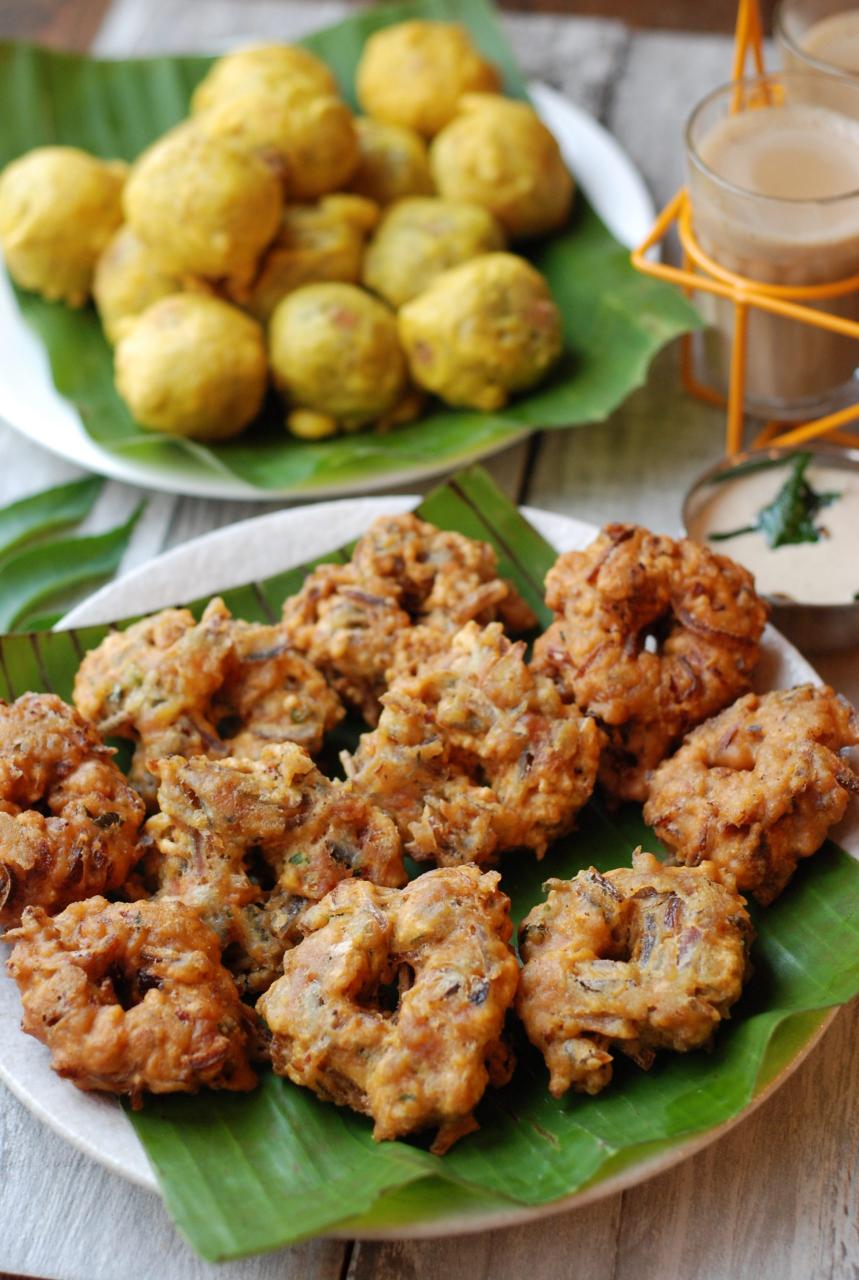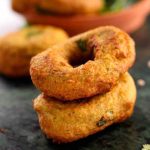Ulundu Vadais, also known as Medu Vada, is a savory doughnut-shaped fritter from South Indian cuisine, particularly beloved in Tamil Nadu, where “ulundu” refers to urad dal or black lentils, the primary ingredient. These crispy yet fluffy vadas are a staple at many festive occasions and are commonly served as a breakfast item or snack.
To make Ulundu Vadai, urad dal is soaked for several hours, then ground to a fine paste with minimal water to retain the batter’s airiness. The batter is then seasoned with finely chopped onions, green chilies, cumin seeds, black pepper, curry leaves, and sometimes grated coconut or ginger for added flavor. A key characteristic of the medu vada is the hole in the center, which ensures even cooking and adds to its distinctive appeal.
Ulundu Vadais Recipe


Ulundu Vadais
Equipment
- 1 paper towels
- 1 blender
Ingredients
- 1 cup husked whole black lentils rinsed, soaked in water for 4 to 6 hours, drained
- 2 green chiles
- 1/4 to 1/2 cup water
- 2 teaspoons salt
- 1/4 cup finely chopped onion optional
- 2 tablespoons finely chopped fresh cilantro
- 10 curry leaves finely chopped
- 1 teaspoon finely chopped peeled fresh ginger
- 1 teaspoon peppercorns
- 11/2 cups corn oil or vegetable oil
Instructions
- Line a plate with paper towels and set aside.
- In a blender, combine the black lentils and green chiles. Adding a little water at a time, pulse the ingredients until a smooth, wet dough forms. Do not use more than 1⁄2 cup of water. Transfer the batter to a large bowl and refrigerate for 30 to 45 minutes.
- Remove the batter from the refrigerator and stir in the salt, onion (if using), cilantro, curry leaves, ginger, and peppercorns.
- In a deep skillet or wide kadai over medium-high heat, heat the oil. Reduce the heat to medium and heat the oil for 3 minutes. While the oil heats, place the batter next to the stove along with a wide bowl filled with water.
- When the oil is ready, wet your palms and shake off any excess water. Take a lemon-size portion of batter in your hands and slowly toss it between your palms to form a ball. Holding the ball with your fingers, use your thumb to make a big hole in the center. Make 2 more balls. Carefully drop the vadais into the hot oil and fry for 30 seconds. Using a slotted spoon, flip the vadais and fry for 45 seconds to 1 minute, until they turn light golden brown and the bubbling sound stops. Using a slotted spoon, transfer the vadais to the paper towel–lined plate to drain. Repeat with the remaining batter; do not fry more than 3 vadais at a time.
Notes
well. For soft and crispier vadais, frying at medium heat is best.
Cooking Tips about Ulundu Vadais

- Quality of Urad Dal: Start with high-quality urad dal (black gram lentils) as it is the key ingredient. It should be fresh and not too old, which could affect the consistency of the batter.
- Soaking Time: Soak the urad dal for at least 4-6 hours or overnight, which helps in grinding it to a smooth and fluffy batter.
- Grinding Process: While grinding the soaked dal, add very little water. The batter needs to be thick and aerated. If the batter becomes runny, the vadas will not hold their shape and will absorb more oil.
- Seasoning: Finely chop onions, green chilies, cumin seeds, black pepper, curry leaves, and any other additional ingredients like ginger or grated coconut. Mix these into the batter for added flavor and crunch.
- Consistency Check: To check if the batter has the right consistency, drop a small amount into a bowl of water. If it floats, it is light enough and ready for frying.
- Shaping Vadais: Wet your hands with water or oil when shaping the vadais, this will prevent them from sticking to your hands. Make a hole in the center for even cooking.
- Frying Temperature: Heat the oil to around 350°F (175°C). A correct oil temperature is crucial – too hot, and the vadas will cook too quickly on the outside while remaining raw inside; too cool, and they will absorb too much oil.
- Testing Oil Temperature: Drop a tiny amount of batter into the oil. If it raises to the surface immediately without getting burnt, the oil is ready for frying.
- Frying Vadais: Fry them until they are golden-brown, and make sure to turn them over so that both sides cook evenly.
- Draining Excess Oil: Once cooked, place the vadais on kitchen paper to drain excess oil which ensures they remain crisp.
- Serve While Hot: Ulundu Vadai is best served hot and crispy, traditionally with sambar and coconut chutney.
Serving suggestions about Ulundu Vadais

- With Sambar: A classic pairing is to serve the vadais with sambar – a spicy and tangy lentil soup. Dunking the vadais in sambar softens them slightly and allows them to absorb the flavors.
- Coconut Chutney: Serve alongside fresh coconut chutney. The creaminess of the chutney complements the crispness of the vadais.
- Multiple Chutneys: Offer a variety of chutneys such as tomato chutney, mint-cilantro chutney, or Andhra Palli chutney for a range of flavors.
- As Part of a Meal: Include them as part of a South Indian thali or meal platter, which includes rice, different curries, and other side dishes.
- Yogurt Dip: They can be dipped in spiced yogurt or curd, known as ‘thayir vadai’, especially if they are leftovers and have become a bit firm.
- Tamarind Chutney: Dress them up with a drizzle of sweet tamarind chutney for a sweet and sour experience.
- Rasam: Some prefer dipping the Ulundu Vadai in rasam, another soup-like South Indian dish that is sour, spicy, and warming.
- As a Snack: Simply enjoy them on their own as a tea-time snack with a cup of hot South Indian filter coffee or chai.
- Vada Curry: Transform leftover vadais into a new dish by breaking them up and adding them to a spicy curry sauce, commonly known as ‘vada curry’.
- Vadai Chaat: Create a chaat by topping the vadais with various chutneys, chopped onions, tomatoes, and sprinkled with chaat masala and sev (crunchy noodles made from chickpea flour).
Top 5 FAQs about Ulundu Vadais

- What is Ulundu Vadai and how is it made? Ulundu Vadai, or Medu Vada, is a savory doughnut-shaped fritter made from urad dal (black lentils). The lentils are soaked, ground into a batter, seasoned with spices and herbs like cumin seeds, black pepper, curry leaves, onions, green chilies, and deep-fried until golden-brown.
- Why is there a hole in the center of Ulundu Vadai? The hole in the center helps the vadai to cook evenly on the inside and outside, ensuring that it’s crispy and also helps to maintain the shape during frying.
- Can Ulundu Vadai be made ahead of time? While they are best enjoyed fresh, you can prepare the batter ahead of time and store it in the refrigerator. For the best texture, fry the vadais just before serving.
- Is Ulundu Vadai gluten-free and vegan? Yes, traditional Ulundu Vadai is gluten-free and vegan as it’s made from lentils and other plant-based ingredients without any use of dairy or wheat products.
- How do I serve Ulundu Vadai? Ulundu Vadai is typically served hot with sambar (a spicy lentil soup) and coconut chutney. It can also be enjoyed with various other chutneys like tomato chutney or as part of a larger meal platter.
In conclusion, Ulundu Vadai is not merely food but a cultural experience, inviting all who partake to savor a piece of the rich tapestry of flavors that define South India’s culinary heritage. Whether you’re a seasoned vada aficionado or a curious food enthusiast, these savory delights are sure to leave a memorable impression on your palate and heart.

Leave a Reply